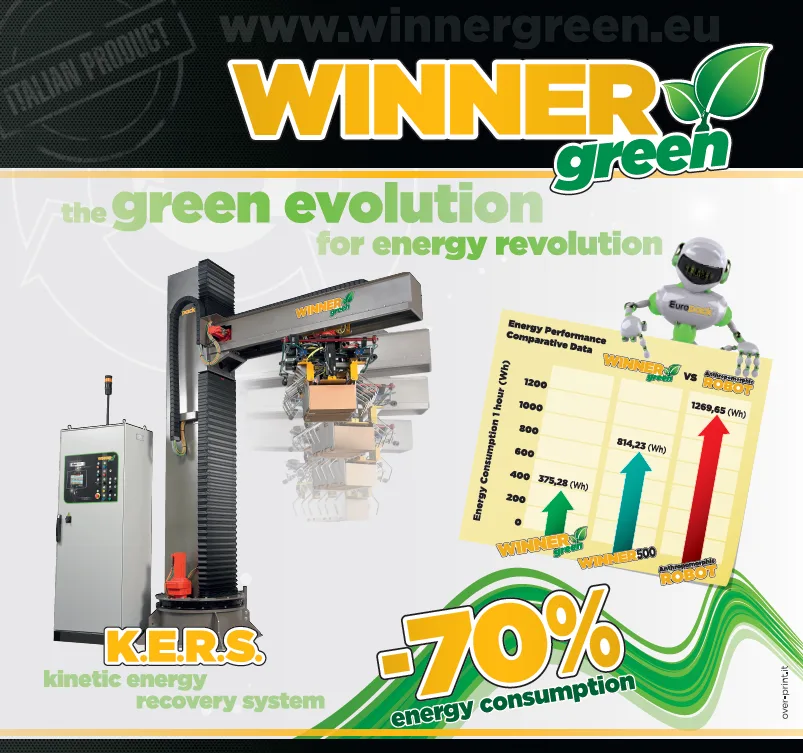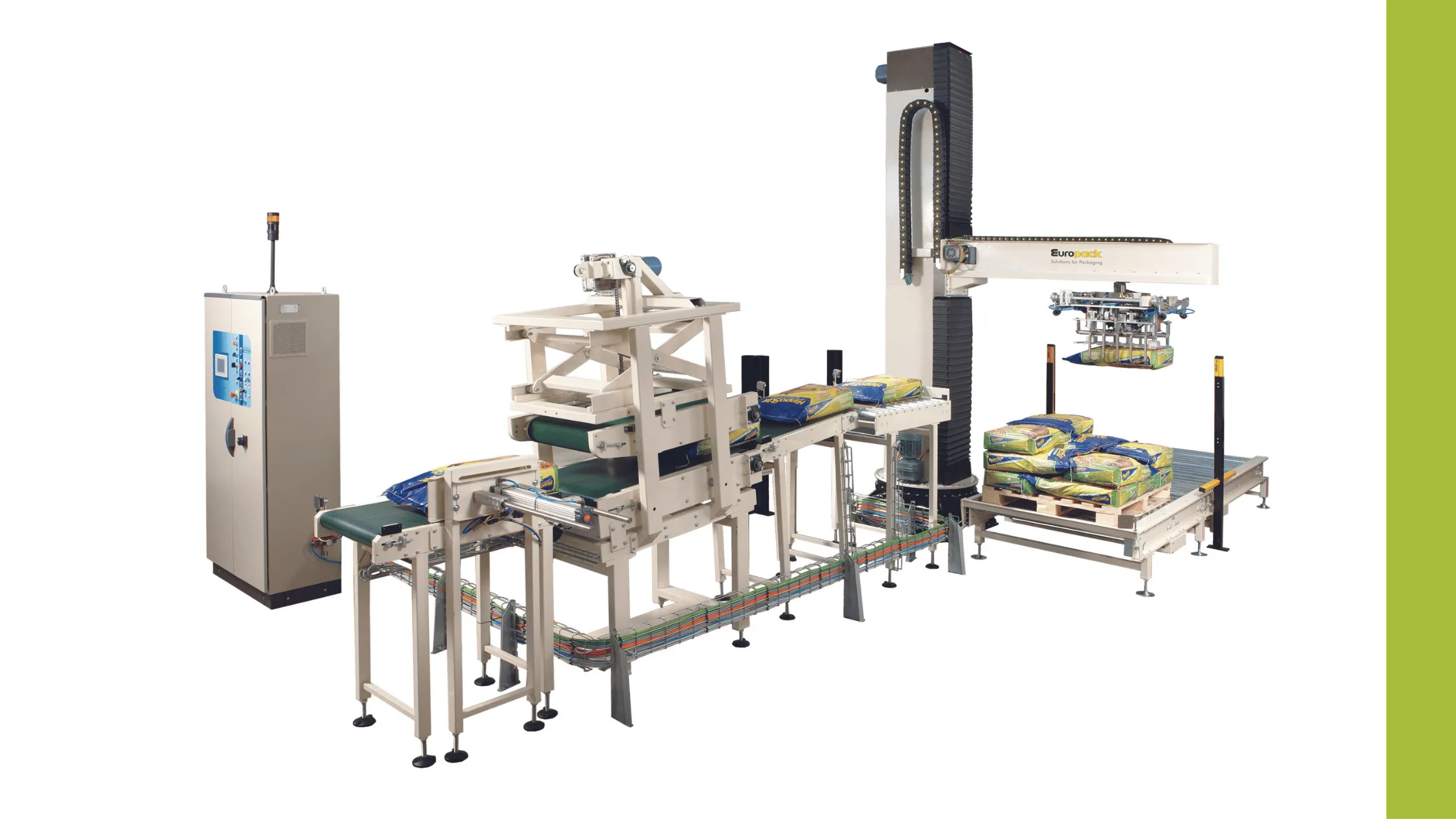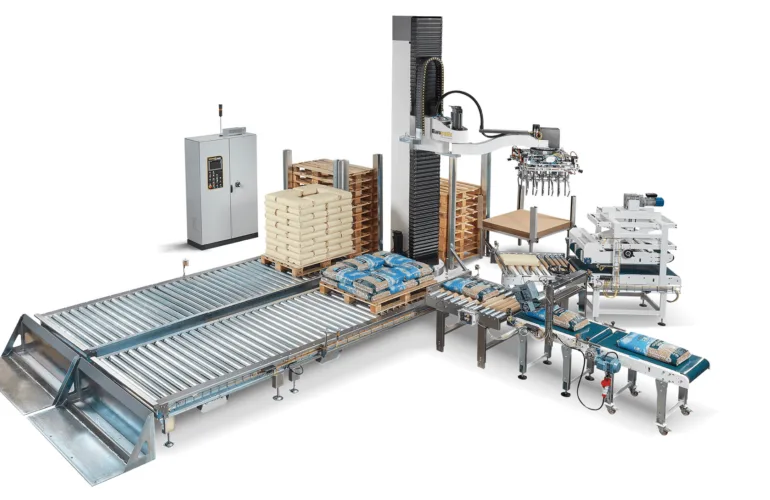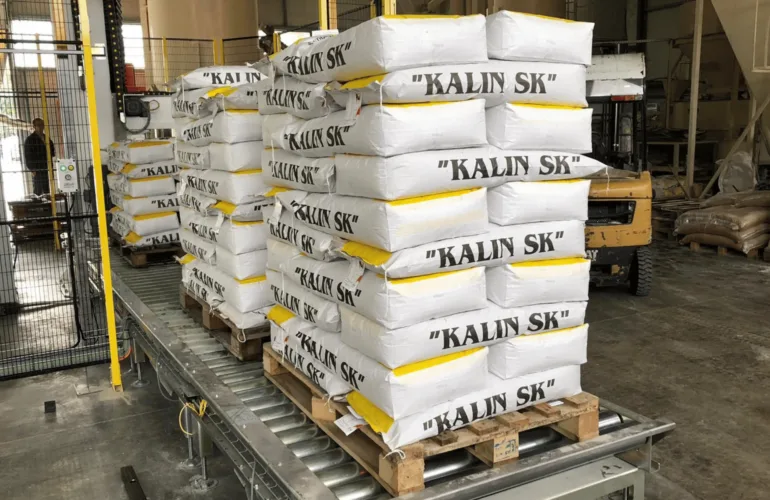In most developed countries, manufacturing is one of the top three sources of greenhouse gas (GHG) emissions. Industries including automotive, electronics, steel, cement, food production and more all contribute to emissions through energy consumption, industrial processes and waste generation – and therefore have a responsibility to take action to reduce their carbon footprint.
In advance of World Environment Day on 5 June, we take a look at how investing in automation can help manufacturing operations reduce their environmental impact, from improving energy efficiency to reducing waste.
Enhancing efficiency through robotics
Automation has a key role to play in reducing the environmental impact of manufacturing. Investing in robotic technology offers significant energy-saving benefits, improving operational efficiency, reducing energy consumption and increasing sustainability in a number of ways:
1. Europack palletisers
A prime example is Europack’s Kinetic Energy Recovery System (KERS), a cutting-edge technology featured on the Winner Green range of palletisers, that transforms wasted energy into reusable power.
Similar to the system on hybrid cars, KERS utilises regenerative braking technology, capturing and storing the kinetic energy created during the deceleration or stopping process that would usually be wasted or dissipated as heat. This stored energy is then intelligently reused to power other parts of the process, effectively reducing overall energy consumption by up to 70%.

2. Precision and optimisation
Robots are highly accurate and consistent in executing tasks, leading to improved precision in manufacturing processes. This accuracy minimises errors, reduces material waste and optimises energy usage. By precisely controlling which movements and actions are required and how frequently they happen, robots can reduce unnecessary energy expenditure and deliver overall energy savings.
Equipment performance can also be maximised in a similar way, reducing the occurrence of breakdowns, malfunctions and unsatisfactory operation and minimising the amount of energy wasted due to inefficient usage. This in turn lowers the need for maintenance and repairs, further conserving energy and resources.
3. Process automation
Robotics enables the automation of repetitive and energy-intensive tasks that were previously performed manually. By taking over these tasks, robots can complete them with greater efficiency, speed and consistency, leading to reduced energy consumption. This is particularly beneficial where operations involve heavy lifting, assembly and material handling, as robots can perform these tasks precisely and with minimal energy waste.
For example, sack-filling machines can complete heavy and laborious tasks that would take several people minutes to finish in just a few seconds. A good example is the V5/10 Special, from industry experts VAI, which can fill up to 1,100 bags per hour with great precision and accuracy.
4. Smart management
Some production lines can be equipped with sensors and monitoring devices to collect real-time data on the energy usage and performance of machines. This data enables manufacturers to identify energy-intensive processes or areas of inefficiency and make necessary adjustments to optimise energy usage. By continuously monitoring and adapting energy consumption, manufacturers can achieve the best balance between productivity and energy efficiency.
A greener future
By incorporating robotics and advanced technologies such as Europack’s KERS system, manufacturers can achieve remarkable improvements in energy efficiency, reduce their environmental footprint, conserve energy resources and contribute to a more energy-efficient and environmentally conscious world. Indeed, these advances are essential if the manufacturing industry is going to move towards a greener and more energy-conscious future.




